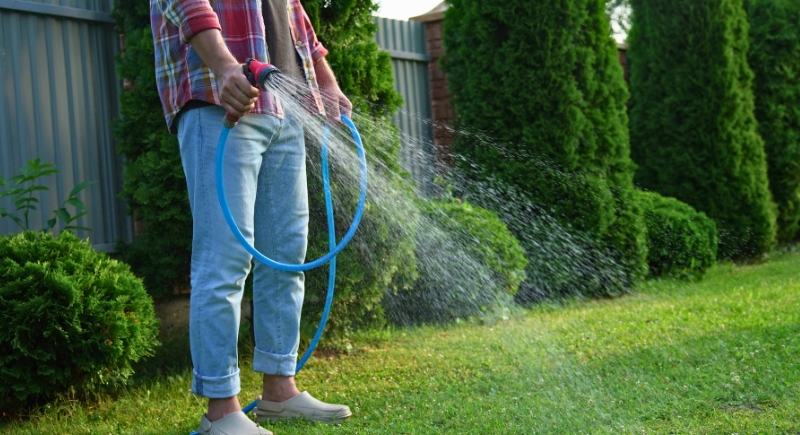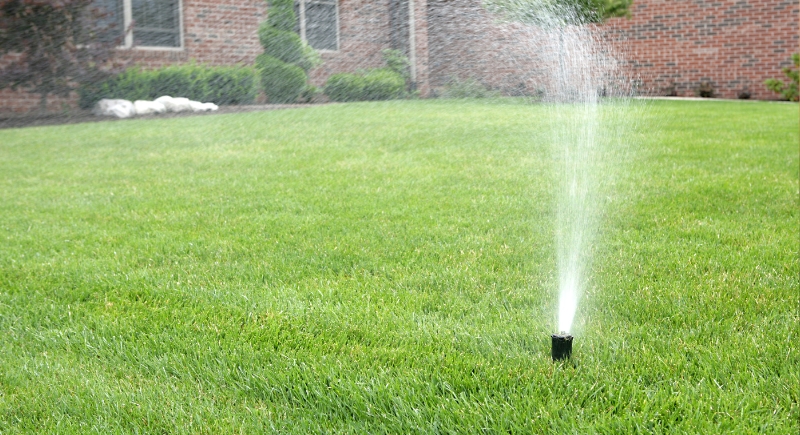The Best Time to Water Your Lawn, According to Lawn Experts
A healthy lawn doesn’t happen by accident. Mowing is just one part of it. Homeowners often spend heavily on seed, fertilizer, or sprinkler systems, but those efforts won’t amount to much if watering is done at the wrong time. Getting the schedule right is one of the biggest differences between grass that thrives and grass that struggles.
It’s easy to assume water is water, and as long as the soil gets wet, you’re fine. But timing affects how much water sinks into the roots, how much is lost to evaporation, and whether moisture lingers long enough to invite disease. Experts say there’s a clear window that gives grass what it needs without wasting gallons. The question most people have is simple: when exactly is that window?
Morning Wins Every Time

Image via Canva/Africa Images
Every lawn-care expert agrees early morning is the sweet spot. The best window is before 10 a.m., when the air is cooler, winds are calmer, and water has time to sink into the soil instead of evaporating in the sun. Some specialists even narrow it down to just before sunrise, around 5 to 6 a.m. Watering then gives the soil a full day to absorb moisture, and grass blades dry off naturally as the sun climbs, lowering the chance of disease.
If you wait till midday between 10 a.m. and 2 p.m., heat burns off much of what you spray before it reaches the roots. You end up using more water for less benefit, and shallow roots are the usual result. Evening isn’t much better. A wet lawn that sits through the night is a breeding ground for fungal problems like rust or red thread. In short, morning sets your grass up for the healthiest growth while avoiding wasted effort.
How Much Is Enough
A quick daily sprinkle does more harm than good. Experts recommend soaking the soil so moisture reaches at least 6 inches down, which matches the average root depth of most turf grasses. That usually translates to about 1 to 1.5 inches of water per week, ideally split into one or two deeper sessions instead of seven light ones. This encourages roots to grow downward and makes the lawn more resilient to heat and dry spells.
If you’re unsure how far water is sinking, there are easy tests. Push a screwdriver into the soil after watering. If it glides down about 6 inches, you’ve hit the mark. You can also place an empty can in your sprinkler’s path and measure how long it takes to collect an inch of water.
Adjust for Grass, Soil, and Weather

Image via Getty Images/ftwitty
Not all lawns drink at the same pace. Kentucky bluegrass, for example, tends to be thirstier than tall fescue. Clay soil holds moisture longer but absorbs water slowly, so shorter repeated sessions may be necessary. Sandy soil drains fast and often needs more frequent watering. Then there’s the weather.
A cool, cloudy week means you can dial things back, while a stretch of hot, windy days demands more.
Lawns also have observable indications that tell you when they need help. If their blades stay flat after you step on them or start to curl inwards, it means you’re seeing early signs of stress. A dull green or yellow tint is another red flag. Paying attention to those cues and adjusting accordingly keeps your yard healthy without wasting water.
Tools That Make It Easier
An in-ground irrigation system with a timer is the most accurate setup, but you don’t need one to water properly. A basic hose timer on your spigot prevents overwatering and saves you from leaving sprinklers running too long.
For sprinklers, pulsating models work best for established grass because they deliver heavier streams that aren’t lost to wind or heat. Oscillating sprinklers still have value for new seed, which can wash away under stronger pressure.
If you miss watering for a stretch, don’t panic. Lawns often survive summer by going dormant and will come back when rain returns. The key is consistency: even in dormancy, occasional light watering keeps the crowns alive so recovery is easier.